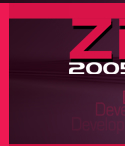 With the participation of
With the participation of

|
|
Bob Heile |
Ed Callaway |
| |
|
|
|
Carl Williams |
Brett Sheppard |
| |
|
|
|
Robert Poor |
Jose Gutierrez |
| |
|
|
|
Zachary Smith |
Mark Pacelle |
| |
|
|
|
Lama Nachman |
N. Kushalnagar |
| |
|
|
|
S. A. Tunheim |
John A. Green |
| |
|
|
|
C. Carbonara |
|
| |
|
|
|
Will wireless sensor networks be the next hot topic in the telecommunication industry? Analysts agree that the promise of wearable consumer goods, residential applications, and automotive network nodes is considerable. Enabling technologies must be developed further and standards must be agreed on in order to meet this demand. Will ZigBee play this role? This Wireless Personal-Area Network (WPAN) system is being defined by the ZigBee Alliance, together with the IEEE-802.15.4 group. ZigBee features a data rate of less than 220 kbits/s and is optimized for very long battery life, measured in months to years and can control lighting, air conditioning, smoke and fire alarms, and other security devices. The standard supports 2.4-GHz transmissions worldwide, 868-MHz in Europe and 915-MHz in the Americas operating in unlicensed radio bands. The range is up to 75 m , but more typically between 10 and 20 m. An enhanced revision is under development (IEEE802.15.4a), which is going to be based on Ultra-Wide-Band (UWB) technology, offering location capabilities.
ZigBee addresses the needs of remote monitoring & control, and sensory network applications. This technology enables broad-based deployment of wireless networks with low cost, low power solutions and provides the ability to run for years on inexpensive primary batteries for a typical monitoring application. Indeed, ZigBee is well suited to a wide range of building automation, industrial, medical and residential control & monitoring applications. Essentially, applications that require interoperability and/or the RF performance characteristics of the IEEE 802.15.4 standard would benefit from a ZigBee solution.
However, analysts warn that ZigBee is in danger of evolving into simply one among many proprietary options. The danger is the proliferation of proprietary 802.15.4 solutions in advance of the availability of the ZigBee standard.
During the ZigBee Conference to be held in Paris on 10 to 13 May 2005 , distinguished experts and key players in the field will address these issues with detailed and technical explanations.
The program of the Conference is now available on-line,
PRINCIPAL SPEAKERS
Bob Heile, Chairman, ZigBee Alliance | Zachary Smith, Chief Software Architect, Ember Corporation Technical Editor, Network Work Group, ZigBee Alliance | Robert Poor, CTO, Ember | Carl Williams, Senior Staff Architect, KDDI Labs USA, IPv6 Forum Fellow, IPv6 Forum | Brett Sheppard, CEO and Founder, Absolutely Inc. | Hee Jean Kim, Ph.D.Senior Member of Research Staff SamSung Advanced Institute of Technology, ZigBee Alliance, Secretary, Security Work Group | Ed Callaway, Ph.D., P.E.Board Member, Zigbee Alliance, Fellow of the Technical Staff, Motorola Labs | José A. Gutierrez, Principal Engineer, Innovation Center, Eaton Corporation | Lama Nachman, Intel Research and System Technology Lab, Intel Corporation | Sandra Lucia Wear, CEO and President, Atalum | Mark Pacelle, Vice President of Marketing, Millennial Net | Svein Anders Tunheim, Chief Technology Officer, Chipcon AS, Norway | Nandakishore Kushalnagar, Intel, co-chair of the IPv6 over IEEE 802.15.4 IETF working group | Claudio Borean, Access Network & Terminals System Design, Telecom Italia Lab | Corey P. Carbonara, Ph.D., Baylor University | Dr. Zafer Sahinoglu, Mitsubishi Electric Research Laboratories | Michael Korpi, Ph.D., Baylor University | John A Green, Consultant, IC2 Institute |


